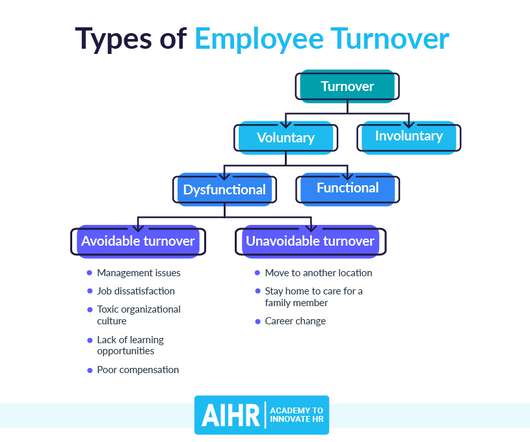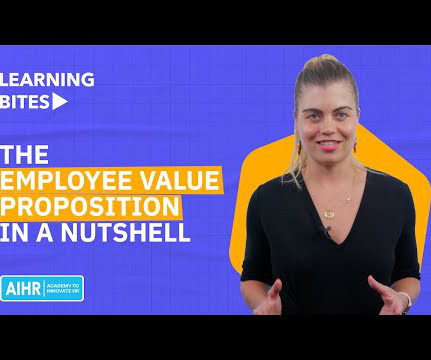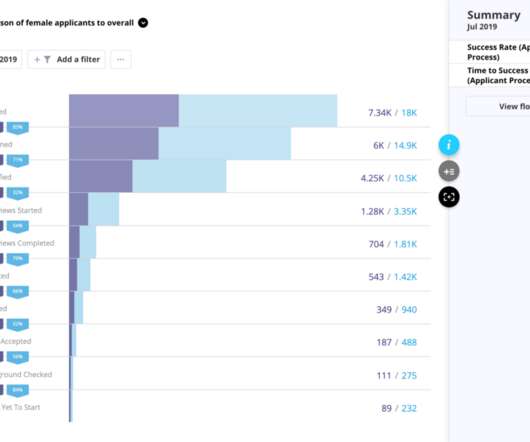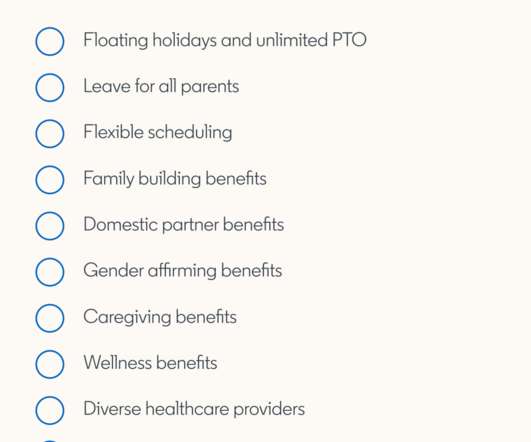What is Voluntary Turnover? Definition, Causes, and Calculation
Analytics in HR
NOVEMBER 2, 2021
Voluntary turnover is a normal occurrence, as employees seek new opportunities or leave because they are unsatisfied with the current role for a multitude of reasons. The Great Resignation has certainly caused employers to look at their HR practices and what is causing a mass voluntary turnover. One of them is voluntary turnover.

























Let's personalize your content